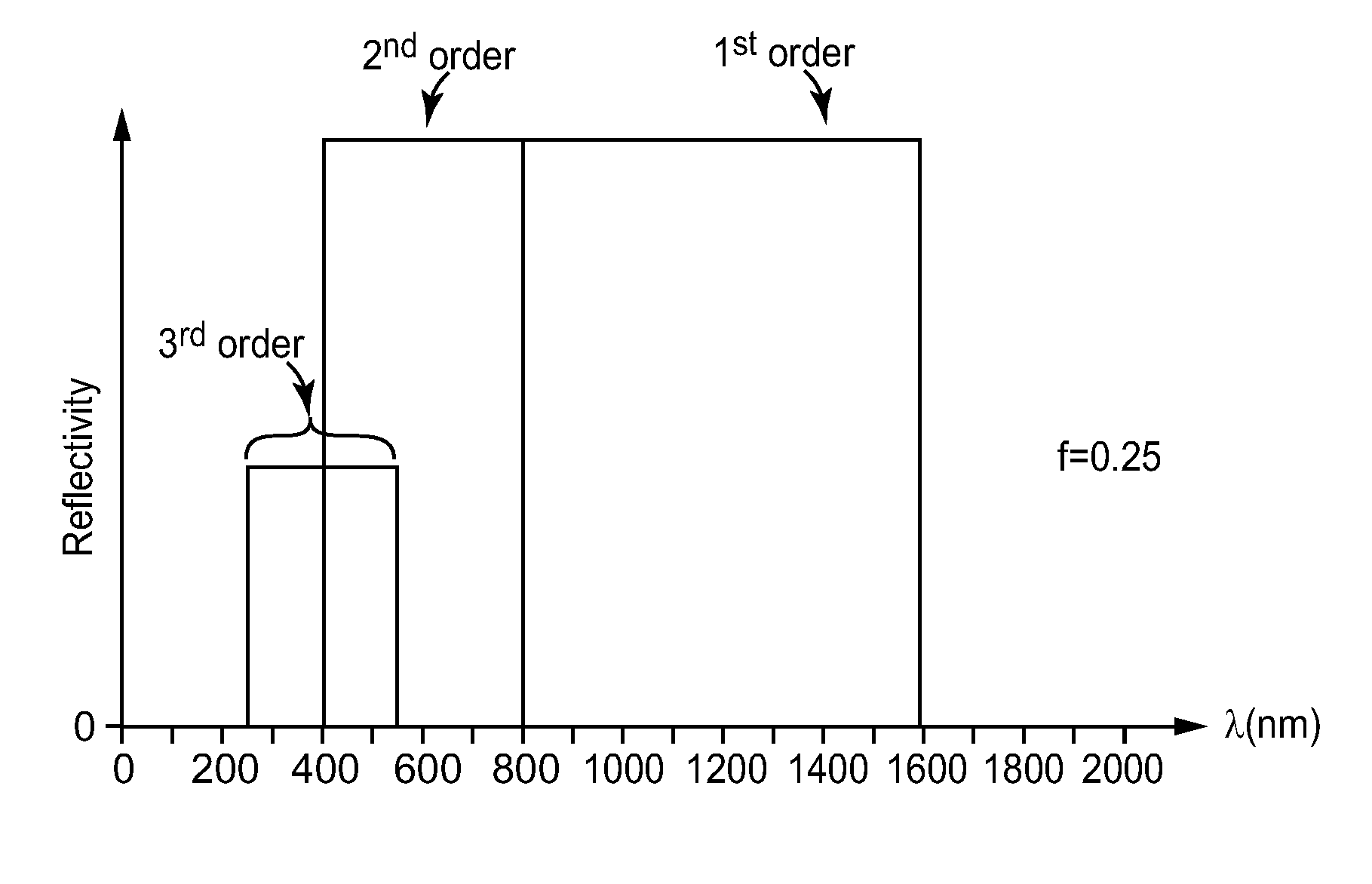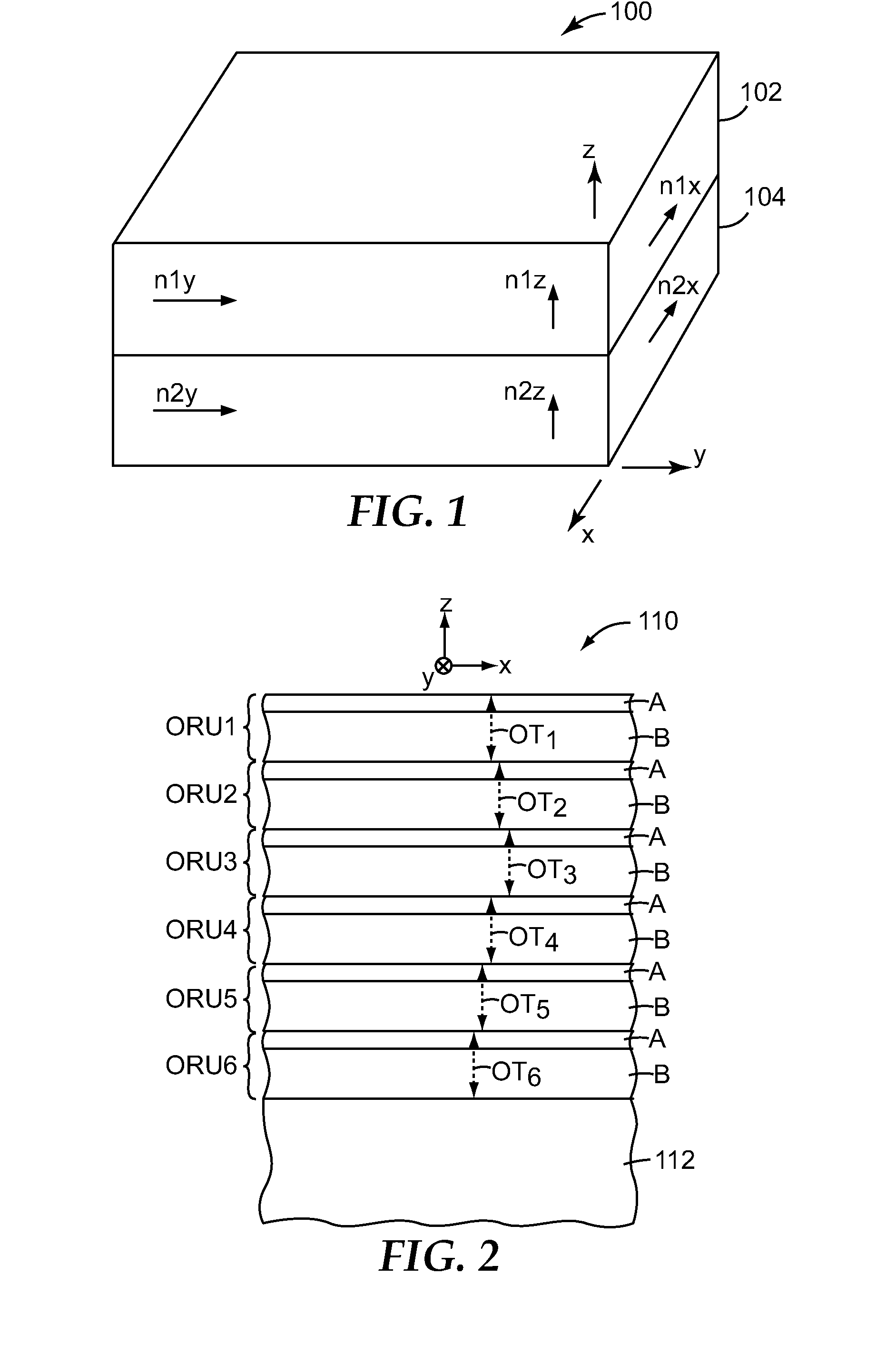Multilayer stack with overlapping harmonics for wide visible-infrared coverage
a multi-layer, visible-infrared technology, applied in the direction of mirrors, instruments, spectral modifiers, etc., can solve the problem that the stack may not provide the 3sup>rd /sup>order reflection band
- Summary
- Abstract
- Description
- Claims
- Application Information
AI Technical Summary
Benefits of technology
Problems solved by technology
Method used
Image
Examples
Embodiment Construction
[0050]As mentioned above, we disclose here inter alia optical articles such as multilayer optical films and film combinations in which at least one microlayer stack or packet provides multiple harmonic reflection bands at a design angle of incidence, including a 2nd order reflection band and a 1st order reflection band, and the 2nd order reflection band overlaps or substantially overlaps the 1st order reflection band and / or a 3rd order reflection band, if present, to provide a single wide reflection band that covers at least a portion of visible and infrared wavelengths. The relationships provided in this disclosure between reflection bands of a given stack, and between reflection bands of different stacks, rely upon a clear and precise definition for what a reflection band is and what some of its characteristic features are, particularly, the spectral location of the opposed boundaries or edges of the reflection band. Such definitions are provided further below for purposes of this...
PUM
 Login to View More
Login to View More Abstract
Description
Claims
Application Information
 Login to View More
Login to View More - R&D
- Intellectual Property
- Life Sciences
- Materials
- Tech Scout
- Unparalleled Data Quality
- Higher Quality Content
- 60% Fewer Hallucinations
Browse by: Latest US Patents, China's latest patents, Technical Efficacy Thesaurus, Application Domain, Technology Topic, Popular Technical Reports.
© 2025 PatSnap. All rights reserved.Legal|Privacy policy|Modern Slavery Act Transparency Statement|Sitemap|About US| Contact US: help@patsnap.com



